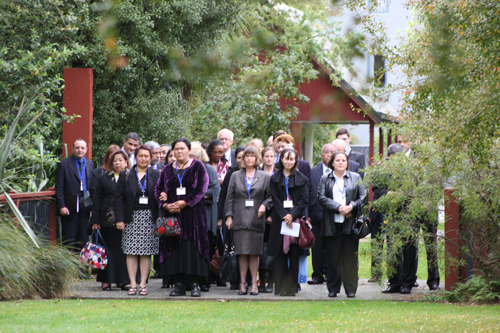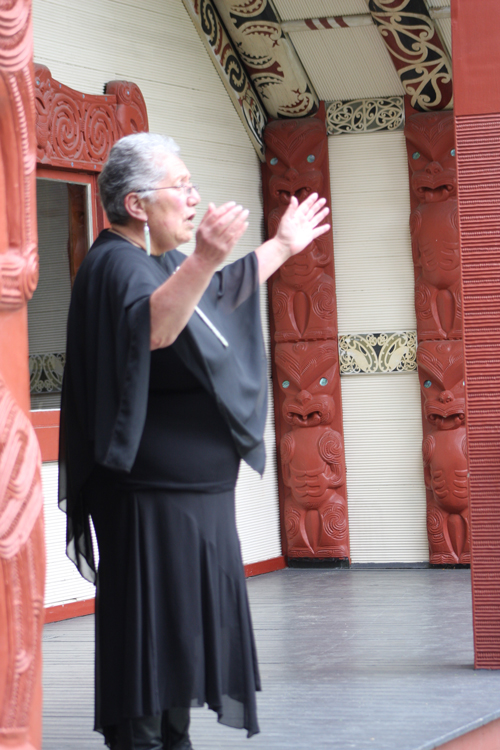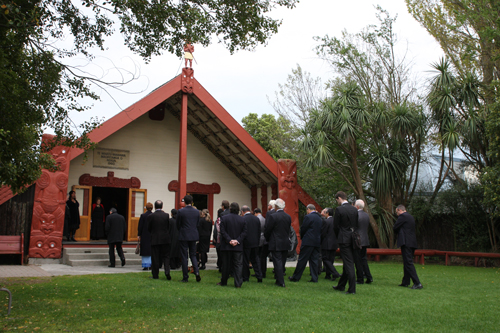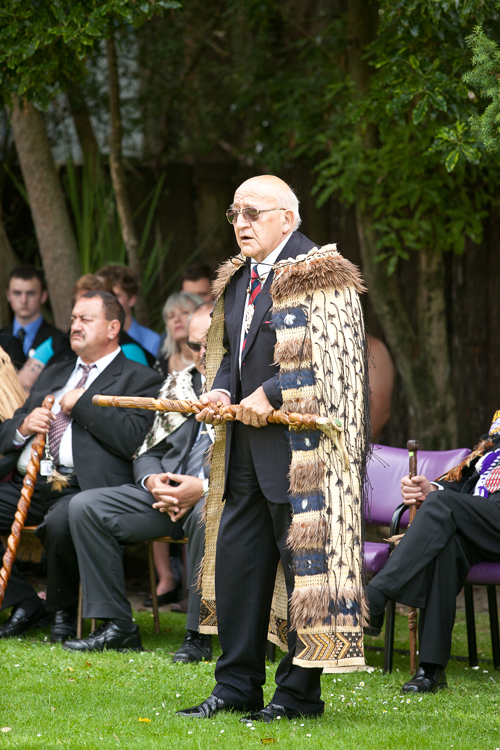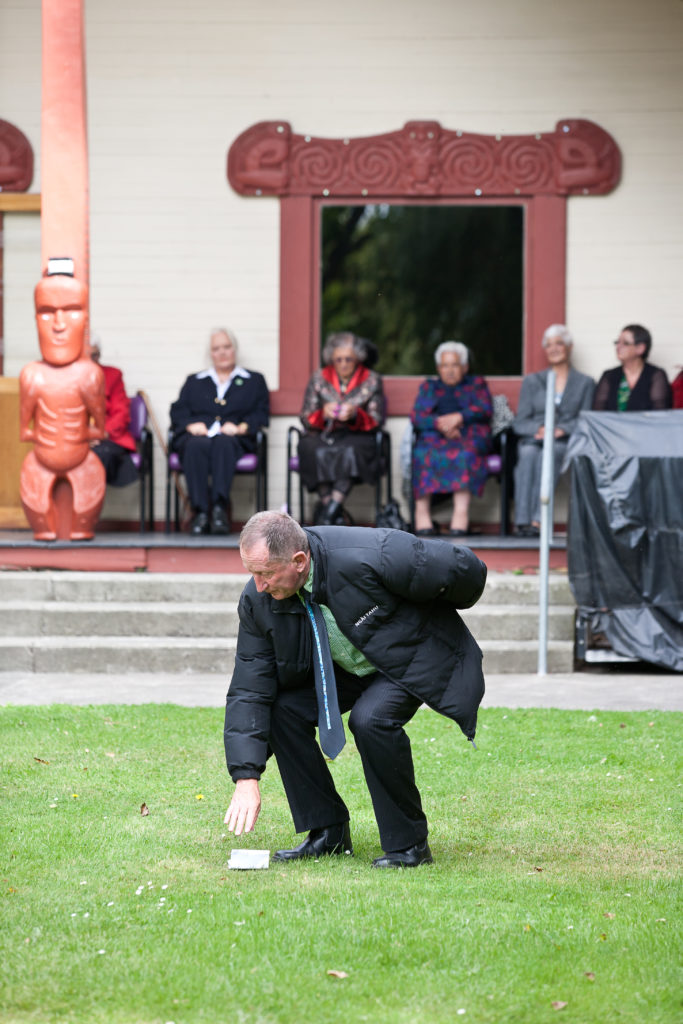
Pōwhiri Process
The pōwhiri or ritual of encountering has been performed by, Māori for many generations. Although initially used to determine whether visitors were friends or foe, pōwhiri today are utilised to welcome all visitors from royalty to school groups to a marae or place. There are many aspects of the pōwhiri process to observe and these may vary from marae to marae and area to area.
This information relates to our marae and has been prepared for your assistance, particularly for first time visitors. We ask that you please take the time to familiarise yourself and your group with this information. Prior to your visit you will need to organise the following:
- Kaikaranga – an adult woman/woman caller for your group. Please note that it is not our kawa for our Kaikaranga to call to a rangatahi (teenager) or kotiro (girl). Please ensure that your Kaikaranga is an adult as it is only appropriate that the Kaikaranga of Te Whatumanawa Māoritanga o Rehua karanga to another adult.
- Kaikōrero – an adult male(s), to provide the reply to the welcome speech. Again it is not our kawa for our Kaikōrero to whaikōrero to a rangatahi (teenager) or tama (boy), nor is it appropriate for a woman to stand to return the speech of welcome..
Waiata – song to support each of your Kaikōrero (speakers).
School groups should seek assistance from their Māori Liaison Kaiawhina/Resource Teacher of Māori through the Ministry of Education. External organisations should seek assistance through their Iwi/Māori Liaison. Please contact our administration office should you have any questions relating to the information supplied.
Moving on the the Marae
- Please gather at Wharemanaaki (Restroom Building). This is a good opportunity to collect the koha from those gathered and place in an envelope. Once collected the koha envelope should be given to your Kaikōrero or in the event of more than one speaker to your Tākoha (last speaker).
- While at the Wharemanaaki please organise your group with the wahine (women) in the front and tane (men) behind them. All children should be between the men and women. It is appropriate to have the oldest people in the front of each group.
- Your Kaikaranga should be at the front of your group – they will lead your group on to our Marae.
- Once your group is ready your Kaikaranga should lead your group quietly to the second bridge where your group will wait for the maioha (the kaikaranga for our marae) to give her first call.
- Once her call has been completed your Kaikaranga will reply to the call and your group should proceed quietly and slowly towards the Wharetipuna (Meeting House).
- It is appropriate to pause approximately 3/4 down the Marae Atea (the open space in front of the Wharetipuna) to acknowledge those that have gone before us – our collective ancestors, friends and family. The length of this time of reflection can vary from 30 seconds to several minutes and is usually determined by your Kaikaranga but once observed then your Kaikaranga will begin to proceed again towards the Wharetipuna.
- Upon reaching the mahou (veranda) please ascend the steps and remove ōu hū (your shoes) placing them neatly to the right of the doorway, and enter the Wharetipuna. Your Kaikaranga should enter first followed by the other women, the children and then the men.
- The wahine should move, upon entering the whare, to the seats behind the front row and the Tane should move to the front row of seats. If there are more men than seating permits in the front row then the women should accommodate accordingly and move back a row. Children may occupy any spare seats or be seated on the floor.
- Please note that while you are removing your shoes and moving to your seats both Kaikaranga may continue to call to each other, the maioha may also point/indicate the direction where people are to move and/or be seated.
- Once at your seats please stay standing until the tangata whenua indicate to you to take your seats.
Procedure Relating to the Whare Tipuna
- The tangata whenua Kaikōrero will begin with a whaikōrero (speech), followed by a supporting waiata.
- Our kawa is Paeke and therefore once all our speakers have spoken and their supporting waiata (songs) sung, the tangata whenua (hosts) will indicate to your Kaikōrero the time to reply.
- At the conclusion of the speech from the Tākoha (final speaker) will place the koha near the middle of the floor towards the first speaker. Please note koha is only laid at the conclusion of all speeches. Where there is more than one organisation in your group who all wish to provide a koha it is recommended that separate envelops with each organisations name be written on them be given to the Tākoha (last speaker) who will lay all koha on behalf of those present. Some Tākoha will indicate the individual groups as he lays them or will place the individual envelops as a collective koha acknowledging they are from the entire group. Either way is appropriate providing the person laying the koha is the last speaker.
- The Tangata Whenua will pick up and acknowledge your group by accepting your koha. On occasion this acceptance may also be acknowledge by the Kaikaranga giving a call of thanks.
- Once the giving and receiving of the koha has taken place then our head Kaikōrero (speaker) will indicate to your Kaikōrero when it is time for the hariru (shaking of hands) and hongi (press noses). One has this opportunity to greet their hosts formally with “Tēnā koe” of informally with “Kia ora”.
- Manuhiri (visitors) are viewed as “tapu” (sacred or set apart from the everyday/normal things). The pōwhiri is viewed as a process of removing the “tapu” and making everyone “noa” (equal). The sharing of food is the final act of this process and therefore the pōwhiri is concluded with a light refreshment that will be provided in the Wharekai (Dining Room).


